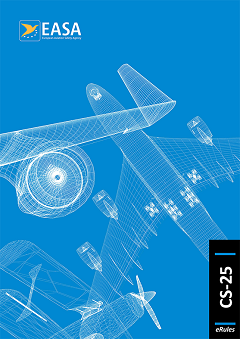ED Decision 2003/2/RM
(a) General. Each aeroplane must meet the trim requirements of this paragraph after being trimmed, and without further pressure upon, or movement of, either the primary controls or their corresponding trim controls by the pilot or the automatic pilot.
(b) Lateral and directional trim. The aeroplane must maintain lateral and directional trim with the most adverse lateral displacement of the centre of gravity within the relevant operating limitations, during normally expected conditions of operation (including operation at any speed from 1·3 VSR1, to VMO/MMO).
(c) Longitudinal trim. The aeroplane must maintain longitudinal trim during –
(1) A climb with maximum continuous power at a speed not more than 1·3 VSR1, with the landing gear retracted, and the wing-flaps (i) retracted and (ii) in the take-off position;
(2) Either a glide with power off at a speed not more than 1·3 VSR1, or an approach within the normal range of approach speeds appropriate to the weight and configuration with power settings corresponding to a 3° glidepath, whichever is the most severe, with the landing gear extended, the wing-flaps retracted and extended, and with the most unfavourable combination of centre of gravity position and weight approved for landing; and
(3) Level flight at any speed from 1·3 VSR1, to VMO/MMO, with the landing gear and wing-flaps retracted, and from 1·3 VSR1 to VLE with the landing gear extended.
(d) Longitudinal, directional, and lateral trim. The aeroplane must maintain longitudinal, directional, and lateral trim (and for lateral trim, the angle of bank may not exceed 5°) at 1·3 VSR1, during the climbing flight with –
(1) The critical engine inoperative;
(2) The remaining engines at maximum continuous power; and
(3) The landing gear and wing-flaps retracted.
(e) Aeroplanes with four or more engines. Each aeroplane with four or more engines must also maintain trim in rectilinear flight with the most unfavourable centre of gravity and at the climb speed, configuration, and power required by CS 25.123(a) for the purpose of establishing the en-route flight path with two engines inoperative.
